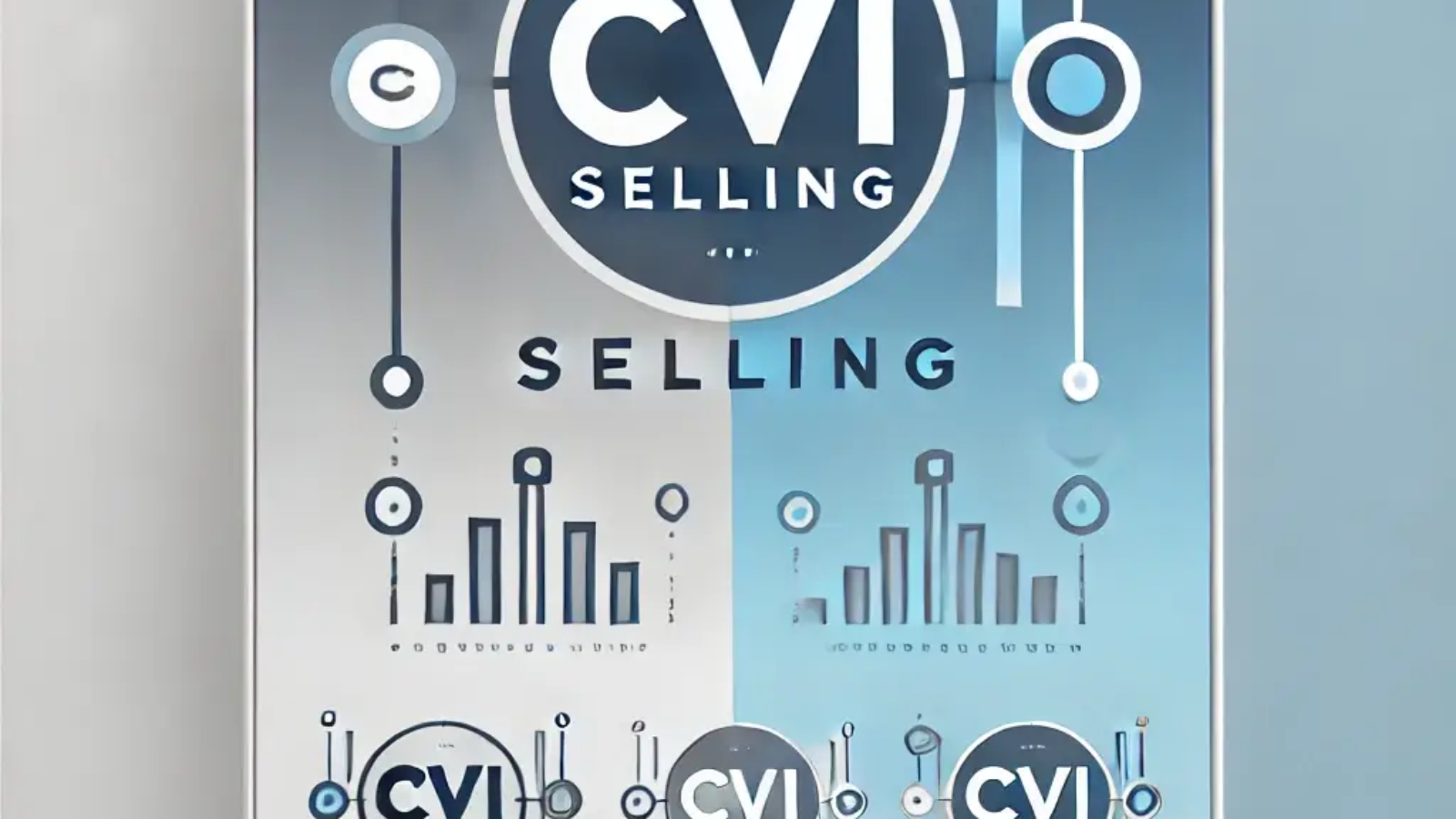Mastering CVI Selling: Customer Value Index for Impactful Sales
In today’s value-driven sales environment, the ability to quantify and communicate the specific value your solution brings to a customer is crucial. The CVI (Customer Value Index) Selling methodology provides a structured approach to do just that. In this comprehensive guide, we’ll explore every facet of CVI Selling, its strengths and potential drawbacks, and how TranscribeIQ‘s chrome extension or Gong/Slack/G-suite integrations can enhance your team’s implementation of this value-focused methodology.
What is CVI Selling?
CVI Selling, or Customer Value Index Selling, is a methodology that focuses on quantifying and communicating the value of a solution to a customer. It’s designed to help salespeople articulate a unique value proposition that resonates with the customer’s specific situation and objectives.
The CVI Selling approach typically involves four key components:
- Goals
- Value
- Vision
- Urgency
Let’s break down each component:
1. Goals
This component focuses on understanding the customer’s specific business goals and challenges.
Key aspects:
- Identify short-term and long-term business objectives
- Understand key performance indicators (KPIs)
- Recognize critical business challenges
Examples:
- “What are your top three strategic priorities for the next fiscal year?”
- “How do you currently measure success in your data analytics efforts?”
2. Value
The Value component involves quantifying the potential impact of your solution on the customer’s business.
Key aspects:
- Calculate potential ROI or cost savings
- Identify areas of operational improvement
- Quantify intangible benefits
Examples:
- “Based on your current processes, our solution could reduce data processing time by 40%, translating to approximately $500,000 in annual savings.”
- “By improving data accuracy, you could potentially increase customer retention by 15%, which for your business could mean an additional $2 million in annual recurring revenue.”
3. Vision
This component is about creating a compelling picture of the future state with your solution implemented.
Key aspects:
- Paint a vivid picture of improved operations
- Demonstrate how the solution aligns with long-term goals
- Show how the solution solves current pain points
Examples:
- “Imagine being able to make real-time decisions based on accurate, up-to-the-minute data from all your global operations.”
- “With our solution in place, your team could spend 60% less time on data preparation and 60% more time on strategic analysis.”
4. Urgency
The Urgency component involves creating a sense of timeliness and importance for implementing the solution.
Key aspects:
- Highlight the cost of delay or inaction
- Identify time-sensitive opportunities
- Demonstrate competitive advantages of early adoption
Examples:
- “Every month you delay implementation, you’re potentially losing $50,000 in operational efficiencies.”
- “Your competitors are already moving towards real-time analytics. Implementing now would put you at the forefront of this trend in your industry.”
Pros of CVI Selling
- Quantifiable Value: Provides concrete numbers to support the value proposition, making it easier for customers to justify the investment.
- Customer-Centric: Focuses on the customer’s specific goals and challenges, ensuring the solution is relevant.
- Facilitates Executive-Level Conversations: The focus on business impact aligns well with C-suite concerns and decision-making processes.
- Reduces Price Sensitivity: By emphasizing value, it shifts the conversation away from price comparisons.
- Improves Deal Quality: The thorough value assessment often leads to more comprehensive, higher-value deals.
- Enhances Credibility: Demonstrates a deep understanding of the customer’s business, positioning the salesperson as a trusted advisor.
- Supports Complex Sales: Particularly effective for complex B2B sales with multiple stakeholders.
- Aligns Sales with Customer Success: By setting clear value expectations, it helps ensure customer satisfaction post-sale.
- Provides Clear ROI: Gives customers a clear understanding of the expected return on their investment.
- Encourages Strategic Thinking: Requires salespeople to think deeply about how their solution impacts the customer’s business.
Cons of CVI Selling
- Time-Intensive: Thoroughly understanding the customer’s business and quantifying value can be time-consuming.
- Requires Deep Business Acumen: Sales reps need a strong understanding of business principles and financial metrics.
- Complexity: Can be challenging to implement, especially for less experienced sales reps.
- Risk of Over-Promise: There’s a potential to overstate the value to win the deal, which can lead to disappointment later.
- May Not Suit All Products: Most effective for complex solutions with significant business impact, less so for simple or commodity products.
- Requires Organizational Support: Often needs input from other departments (e.g., finance, product) to accurately quantify value.
- Can Extend Sales Cycles: The in-depth value analysis can potentially lengthen the sales process.
- Challenges in Value Quantification: Some benefits, particularly intangible ones, can be difficult to quantify accurately.
- Requires Continuous Update: Value propositions need constant refinement as market conditions and customer needs evolve.
- May Not Align with All Buyer Types: Some buyers may prefer a more straightforward, feature-focused approach.
Is CVI Selling Right for Your Team?
Consider implementing CVI Selling if:
- You’re selling complex solutions with significant potential business impact.
- Your sales typically involve multiple stakeholders and long decision-making processes.
- You’re targeting executive-level decision-makers.
- Your team has the capacity for in-depth training and ongoing skill development.
- Your organization can support detailed value analysis and quantification.
- You’re looking to move away from price-based competition towards value-based selling.
- Your product or service requires significant investment and ROI justification.
However, CVI Selling might not be the best fit if:
- You’re primarily selling simple, low-cost products with minimal customization.
- Your sales process is typically transactional with short sales cycles.
- Your team lacks the resources for extensive training in business analysis and value quantification.
- Your market is highly commoditized with little room for value differentiation.
- Your organizational structure doesn’t support the level of cross-functional collaboration required.
How TranscribeIQ Can Help with CVI Selling Implementation
TranscribeIQ’s CVI Selling analysis feature can automatically evaluate your sales calls and provide insights on each element of the CVI framework. Here’s a sample output:
CVI Selling Analysis - NextGen Analytics Date: October 10, 2025 Prospect: Gamma Innovations Goals: Strengths: The rep effectively uncovered Gamma's key business objectives, including their aim to reduce operational costs by 20% and improve data-driven decision making. They linked these goals to specific KPIs such as processing time and forecast accuracy. Areas for Improvement: The rep could have explored long-term strategic goals in more depth. Consider developing a structured framework for goal exploration that covers both short-term and long-term objectives. Value: Strengths: The rep provided a detailed ROI calculation, showing how NextGen Analytics could potentially save Gamma $2 million annually through improved operational efficiency. They also quantified the impact on forecast accuracy, estimating a 30% improvement. Areas for Improvement: While financial impacts were well-covered, the rep could have quantified some of the intangible benefits, such as improved employee satisfaction due to reduced manual data processing. Develop a comprehensive value calculator that includes both tangible and intangible benefits. Vision: Strengths: The rep painted a compelling picture of Gamma's future state with NextGen Analytics, describing a scenario where real-time data from all global operations enables instant, informed decision-making. They effectively tied this vision back to Gamma's stated goals. Areas for Improvement: The vision could have been more personalized to Gamma's specific industry challenges. Create a library of industry-specific future state scenarios that reps can customize for each prospect. Urgency: Strengths: The rep effectively created a sense of urgency by highlighting the monthly cost of delayed implementation and pointing out that two of Gamma's main competitors have already adopted similar solutions. Areas for Improvement: The rep could have tied the urgency more closely to specific upcoming events or milestones in Gamma's business calendar. Develop a framework for identifying and leveraging time-sensitive business events to create urgency. Overall Recommendations: 1. Create a structured goal exploration framework that covers both short-term and long-term objectives. 2. Develop a comprehensive value calculator that includes both tangible and intangible benefits. 3. Build a library of industry-specific future state scenarios for more personalized vision creation. 4. Implement a system for tracking and leveraging time-sensitive business events to create urgency. 5. Conduct regular training sessions on financial analysis and ROI calculation to strengthen the team's value quantification skills.
By leveraging TranscribeIQ’s CVI Selling analysis, sales teams can:
- Ensure consistent application of CVI principles across all sales conversations.
- Identify areas where reps excel or need improvement in each component of the CVI framework.
- Receive actionable insights for enhancing value quantification and vision creation skills.
- Track progress over time as reps become more proficient with the CVI methodology.
- Use data-driven insights for more effective sales coaching and training on value-based selling techniques.
- Improve the quality and depth of value propositions based on actual conversation data.
- Refine techniques for creating urgency and linking solutions to specific customer goals more effectively.
To recap, CVI Selling offers a powerful approach for complex sales environments where demonstrating and quantifying business value is crucial. Its success depends on the salesperson’s ability to understand the customer’s goals, quantify the value of their solution, create a compelling vision, and establish urgency. TranscribeIQ can play a vital role in implementing and refining the CVI approach by providing detailed, real-time analysis of sales conversations, enabling sales teams to continuously improve their effectiveness with this value-driven methodology.
Resources:
- TranscribeIQ Chrome Extension – start a trial and use our CVI Selling analysis on your calls
- CVI Selling – The books that started it all
- Gong’s Guide to CVI Selling– Check out our partner Gong.io’s guide to CVI Selling
- The CVI Page – Latest info on CVI Selling
- TranscribeIQ Sales Methodology Examples – check out real analysis for multiple sales approaches, including CVI Selling.


Add a Comment